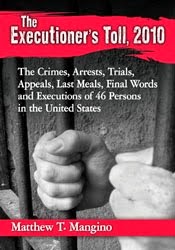The Pennsylvania Law Weekly
February 14, 2012
In the famous courtroom drama "12 Angry Men," rated by the American Bar Association as one of the 25 greatest legal movies of all time, juror No. 8, played by Henry Fonda, earnestly advocated for a not-guilty verdict.
Fonda started out as the only not-guilty vote. The turning point of the deliberations occurred when an older juror recalled that the state's prized eyewitness, who had observed the murder through her window as she laid in bed, had red marks on her nose left from wearing eyeglasses. The older juror asked a reserved bespectacled juror, "Do you wear your glasses when you go to bed?" The bespectacled juror responded, "No, I don't. No one wears eyeglasses to bed."
Ultimately, Fonda succeeded in convincing his fellow jurors to acquit the young defendant accused of stabbing his father. Justice prevailed not because of an effective cross-examination — apparently the eyeglasses-less observation at night through a window did not come up during trial — but rather a persistent juror in search of justice won the day.
The 1957 movie raised an issue that is only now beginning to gain traction, the reliability of eyewitness identification.
The U.S. Supreme Court recently decided
Perry v. New Hampshire . The case involved the prosecution of Barion Perry, who was convicted of theft based on the testimony of a woman who said she saw the theft and described the suspect as tall and black. Then, without prompting from the police, she went to her window and identified Perry, who was standing outside next to a police officer. The identification was used to convict Perry, despite objections from his lawyers that seeing him next to the police officer could have unfairly influenced the woman's identification, the Washington Post reported.
Prior to
Perry , judges were required to screen testimony for reliability when police were suspected of using suggestive tactics. Prescreening was to deter police from creating "suggestive circumstances" that point to a specific suspect, although some evidence obtained through suggestive practices was still admissible.
Perry's lawyer wanted the court to expand the prescreening practice to all identifications made under any suggestive circumstance, not just those created by the police.
"The potential unreliability of a type of evidence does not alone render its introduction at the defendant's trial fundamentally unfair," Justice Ruth Bader Ginsburg wrote on behalf of the majority in
Perry . The sole reason to impose a judicial prescreening process is to deter police from creating suggestive circumstances that point to a specific suspect.
"When there is no improper police conduct there is nothing to deter," Ginsburg added. The
Perry court maintained the status quo.
Ginsberg's opinion noted that the rules of evidence, jury instructions and most importantly, cross-examination are safeguards that protect an accused from the use of unreliable evidence like inaccurate eyewitness identification.
In "12 Angry Men," cross-examination failed to expose a witness' inability, due to impaired vision, to credibly identify the accused. In the movie, the failed cross-examination probably had more to do with ineffective assistance of counsel than a fissure in the mechanism of cross-examination.
In real life, things do not always work out like they do in the movies. Jules Epstein, in "The Great Engine that Couldn't: Science, Mistaken Identification, and the Limits of Cross-Examination," wrote that even effective cross-examination can be inadequate to protect an accused wrongfully convicted through the testimony of an eyewitness.
Epstein referred to a passage in James M. Doyle's book, "True Witness." Doyle wrote about the trial of Ronald Cotton. In 1984, a college student was assaulted in her apartment by an unknown intruder. Two days later, the victim picked Cotton's photograph out of a photo array. She said Cotton's photograph "looks most like her assailant." Later, the victim hesitatingly picked Cotton out of a lineup and ultimately identified him as her attacker at trial.
Cotton's defense counsel, through cross-examination, unlike in "12 Angry Men," was able to establish "the eyewitness victim, who wore eyeglasses, did not have them on during the assault." The witness later admitted the light source for the identification came from blinds, a bedroom window and lights from a stereo.
Cotton was nonetheless convicted. He was later exonerated through DNA evidence. Epstein argues that "judges and lawyers must disabuse themselves of the notion that cross-examination's great engine has the efficacy to redress and prevent the recurrence of mistaken identification." The
Perry decision has essentially left, in part, cross-examination as the primary means to expose a suggestive eyewitness identification that did not directly involve the police. Thirty-five years ago, the U.S. Supreme Court established a test for determining when due process requires suppression of an out-of-court identification produced by suggestive police conduct. In
Manson v. Braithwaite , instead of creating a rule of exclusion the court required judicial prescreening of the identification to determine if the suggestive procedure was reliable when judging the totality of the circumstances.
The Perry court reiterated the rule in
Braithwaite . Once the conduct is determined not to be the product of the police, no matter how suggestive, the inquiry is over. It is not about a search for justice.
Some would suggest that the suppression of incriminating evidence due to police misconduct is also not in the interest of seeking justice. The search of a home without a warrant is the type of police conduct that must not be condoned regardless of what nefarious conduct is interrupted, even though, in essence, justice is denied the state.
Here, the absence of police misconduct seems to deny justice to the accused. Suggestive eyewitness identification should be subject to a judicial prescreening whether or not it was initiated by the police. To do otherwise seems to exclude a layer of protection easily accessible to an accused.
The Perry decision seems wholly inadequate in light of the growing body of scientific evidence supporting a closer look at eyewitness identification.
Since 1977, advances in the social sciences and technology have cast a new light on eyewitness identification. Since
Braithwaite , hundreds of studies on eyewitness identification have been published in professional and academic journals. One study by University of Virginia Law School professor Brandon L. Garrett found that eyewitness misidentifications contributed to wrongful convictions in 76 percent of the cases overturned by DNA evidence.
The Supreme Court ignored the research and acknowledged no shortcomings in the system currently in place to challenge eyewitness identification. Only Justice Sonia Sotomayor acknowledged a potential problem with the status quo. In her dissent, Sotomayor acknowledged that the majority had turned a blind eye toward its own precedents and the abundance of scientific research,
The New York Times reported. "This court has long recognized," she wrote, "that eyewitness identifications' unique confluence of features — their unreliability, susceptibility to suggestion, powerful impact on the jury, and resistance to the ordinary tests of the adversarial process — can undermine the fairness of a trial."
Visit
The Pennyslvania Law Weekly







